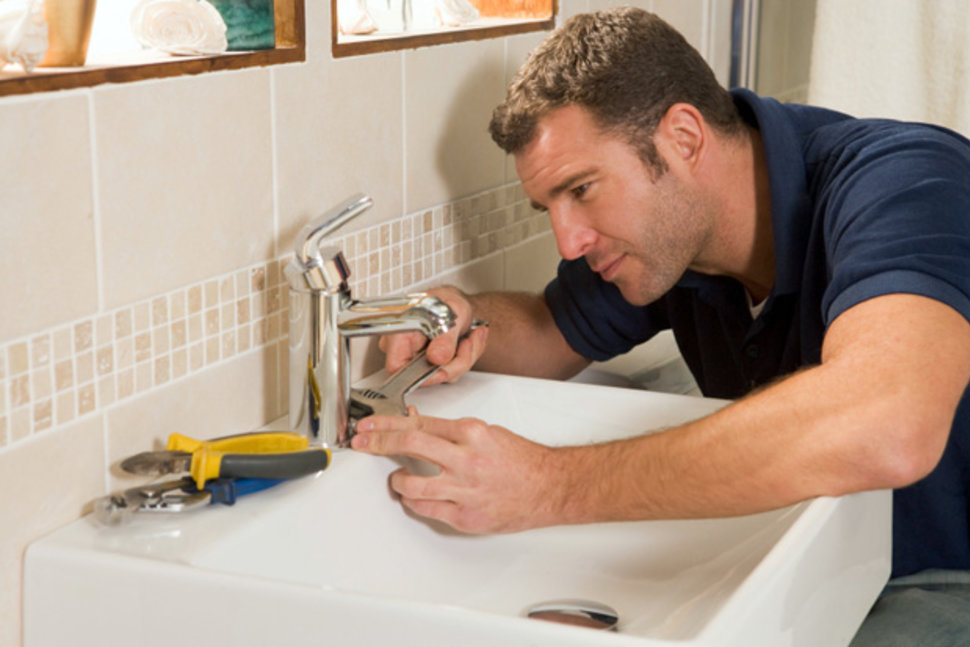

Understanding common household repairs is crucial for every homeowner. It empowers you to tackle everyday maintenance tasks efficiently and affordably, saving you significant money in the long run. This essential skill allows you to maintain your home’s functionality and prevent more extensive damage down the line. Many homeowners feel overwhelmed by the prospect of DIY repairs, fearing mistakes or safety hazards. This guide aims to demystify common household repairs, providing practical advice, step-by-step instructions, and safety tips. We’ll cover crucial topics ranging from plumbing and electrical work to appliance troubleshooting, equipping you with the knowledge you need to confidently tackle these tasks. This article will be structured to walk you through these common repairs, one step at a time, providing clear guidance and real-world examples.
Plumbing Repairs: Fixing Leaky Faucets and Pipes
Identifying Leaky Faucets
Leaky faucets are a common household issue, often costing homeowners money and wasting water. Identifying the source of the leak is crucial for an effective fix. Start by checking the faucet handles for any obvious dripping or water damage around the base. Look for signs of water buildup or wet spots on the surrounding area. If the faucet continues to drip after adjusting the handle, it’s likely a more complex issue needing professional assistance. A leaky faucet can waste up to 10 gallons of water a day. Many people have the misconception that a dripping faucet is inconsequential, but these drips add up, leading to larger water bills.
Repairing a Leaky Faucet
Follow these simple steps to address a minor leaky faucet. First, turn off the water supply to the faucet. Locate the shut-off valves under the sink or in the basement. Turn them clockwise to stop the flow. Next, remove the handle and identify the cause of the leak. It’s often a simple washer replacement. Buy new washers from a hardware store and replace them carefully. Ensure the faucet is properly tightened to prevent any further leaks. Turn the water supply back on and check for leaks. Don’t hesitate to call a plumber if you’re unsure or unable to fix the issue yourself. Remember always to disconnect the water supply before working on any plumbing component.
Electrical Repairs: Addressing Common Issues
Troubleshooting Electrical Outlets
Electrical outlets are a critical part of any household. Over time, issues may arise, ranging from loose connections to faulty wiring. A loose connection can cause the outlet to overheat or even catch fire. An outlet that frequently trips the circuit breaker could be a sign of a more serious electrical issue that should be addressed immediately. Identify potential problems by inspecting the outlet for any visible damage. Look closely for looseness in the wiring or signs of overheating. In cases of doubt, prioritize safety and call a qualified electrician.
Fixing a Faulty Light Fixture
Replacing a light fixture can be a straightforward project. Begin by turning off the power to the affected fixture at the circuit breaker. If unsure, consult your home’s electrical diagram for proper circuit identification. Next, carefully remove the old fixture, noting its wiring connections for later reference. Obtain a new fixture of the same type and follow the instructions provided for installation. Double-check the wiring connections and restore power to the circuit. An incorrectly wired or damaged fixture can pose a safety risk, and it’s vital to handle these tasks correctly.
Appliance Troubleshooting: Common Issues and Fixes
Refrigerator Issues
Refrigerators are essential appliances, and occasional problems can be frustrating. One common issue is a refrigerator that’s not cooling properly. Check the temperature settings and ensure the fridge is not overcrowded. A full fridge can impede airflow and affect cooling efficiency. Another problem is a leaking refrigerator. Check for potential leaks around the door seals and gasket. Confirm the water supply lines to the ice maker and water dispenser are appropriately connected. If the problem persists after these steps, consider contacting a qualified appliance repair technician.
Washing Machine Repairs
Washing machines are often used daily. A common concern is a washing machine that’s not draining properly. Clear any blockages in the drain hose and ensure the drain hose is not kinked or obstructed. Check the washing machine’s filter for clogs. Another typical issue is a washing machine that’s vibrating excessively. This is often due to an unbalanced load or a problem with the machine’s leveling. Ensure the machine is properly level to mitigate vibrations.
Drainage Maintenance: Addressing Clogged Drains
Identifying Drainage Problems
Clogged drains can disrupt daily routines. Early detection is key to preventing further issues. Identify the source of the blockage by checking for debris, hair, or grease accumulation in the drains. Slow draining, bad odors, and water backing up are common signs of blocked plumbing. To diagnose the problem, observe the water flow and identify any areas where it’s restricted. Inspect the drain pipes for clogs using a drain snake or camera inspection.
Effective Drain Cleaning Methods
Use a drain snake to clear hair, grease, and other blockages. This tool can effectively remove clogs and help restore drainage. In cases of severe clogs, consider a chemical drain cleaner. Use these products carefully, following the instructions on the label. Avoid using harsh chemicals repeatedly, as they can damage the pipes. Consider having a professional plumbing service address persistent drainage problems.
Safety Precautions in Home Repairs
Electrical Safety
Electrical work can be hazardous, so it’s imperative to take necessary safety precautions. Always turn off the power to the circuit before working with any electrical components. Use proper tools and protective gear, such as gloves and eye protection. Avoid working on electrical systems if you’re not adequately trained or confident in your abilities. This is a crucial step to avoid injuries and electrical shocks.
Plumbing Safety
Plumbing work involves water and potential risks. When working with plumbing systems, use appropriate protective gear like gloves and eye protection to avoid contact with germs or irritants.
Consult a professional plumber if you feel uncomfortable dealing with plumbing issues. Ensure you shut off the water supply before starting any plumbing tasks.
In summary, understanding common household repairs empowers homeowners to tackle everyday maintenance tasks effectively. By equipping yourself with the knowledge and tools outlined in this guide, you’ll save money, gain valuable experience, and enhance the longevity of your home. Remember to prioritize safety and consult professionals when necessary. For more detailed guidance or specialized repairs, consider reaching out to a trusted home repair service provider. Your home will thank you!